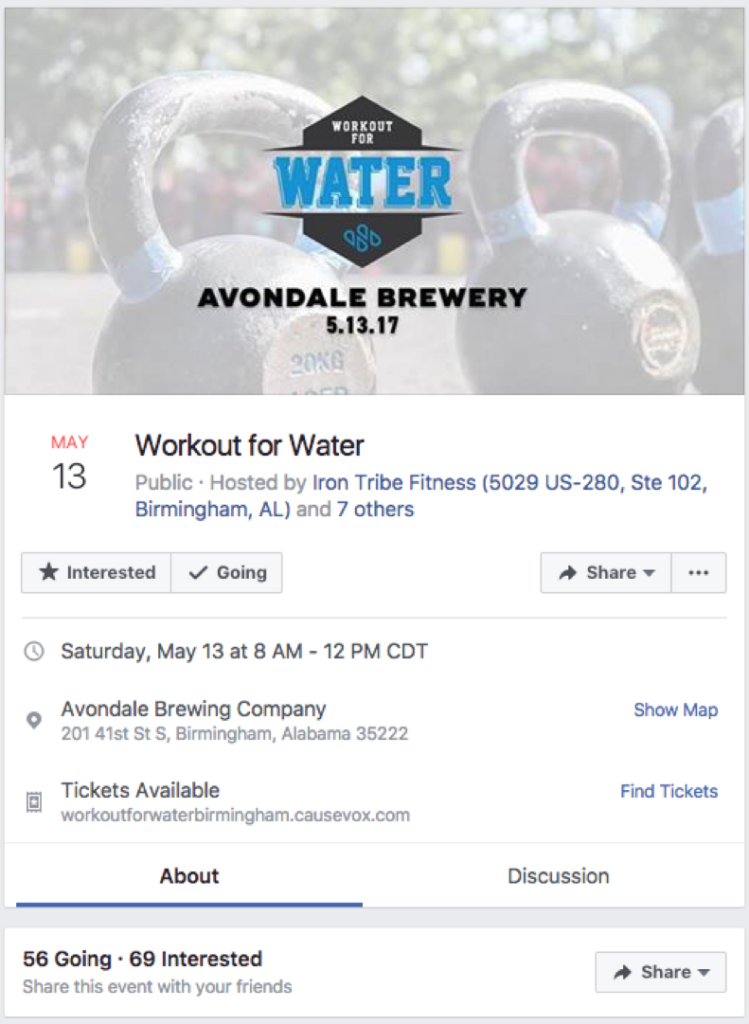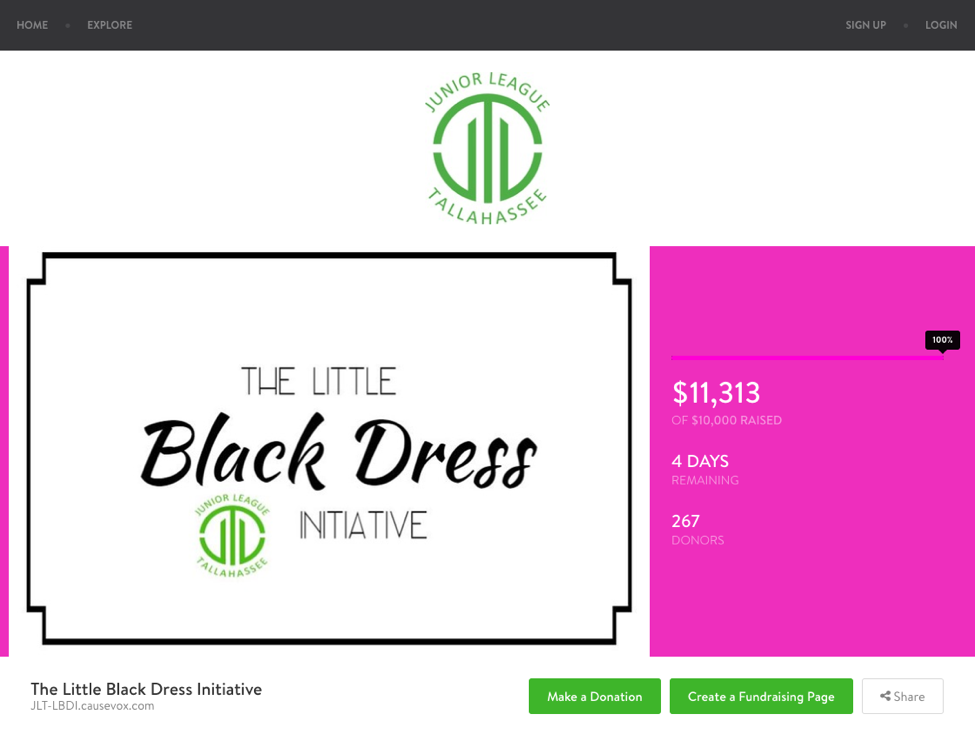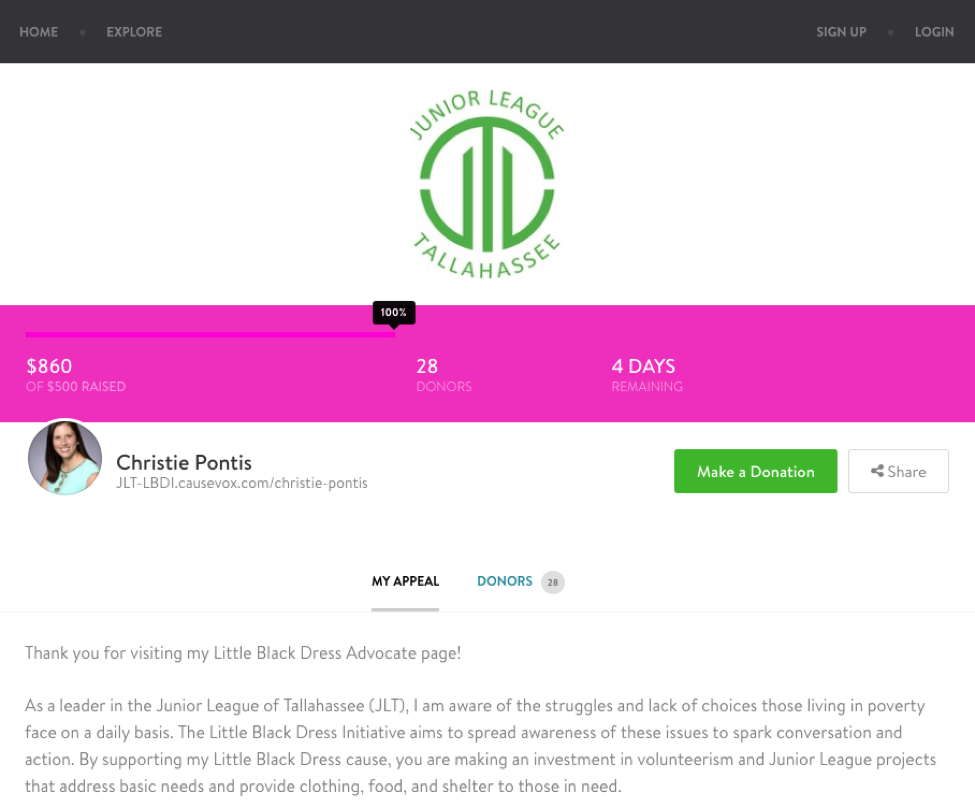In our ever-connected world, ongoing engagement is a vital part of every marketing initiative, and the marketing for your next nonprofit fundraising event should be no different. Lucky for you, there are a variety of useful tools and tactics you can implement right at your fingertips!
The internet is full of cost-effective promotional tools that will not only help you increase donations and event attendance, but will also give your supporters more opportunities to engage with your organization.
Here’s 8 tools that will amplify the impact of your next fundraising event.
“Here’s 8 tools that will amplify the impact of your next fundraising event.” tweet this
1. Use An Event Hashtag
Creating a specific hashtag for your event is a surefire way to focus and track online conversations about it. Hashtags were created by Twitter more than a decade ago to make tweets more searchable. Now commonplace, hashtags can give your organization’s followers the ability to promote your event for you.
To create a hashtag, simple add a “#” before an unbroken word or phrase. Successful hashtags are short, distinct and relevant to the event at hand. To be sure your selected hashtag isn’t in use, search for it on Twitter before implementing it in communications.
Promote the hashtag in both traditional and online marketing material to keep the conversation going. While hashtags may have been created by Twitter, tweets aren’t the only place you can use them any more. Spread and connect your message across a variety of platforms by including your event hashtag on all event-related posts on each of your social media channels.
And don’t forget to track the conversation once it’s begun. Social media scheduling applications like TweetDeck or Hootsuite make it easy to monitor the conversation surrounding your hashtag by conducting a search of Twitter for your custom hashtag and saving the stream.
2. Create a Facebook Event
Another great way to leverage social media for your next fundraiser is by creating a Facebook event on your organization’s Facebook page. Creating a Facebook event for your next fundraiser makes it easy to promote your event and send invites to your followers.

An added advantage of creating an event on Facebook is the social aspect of the platform. For example, when one of your followers RSVPs on your Facebook event page, the activity appears on their feed, as well as their friends’ feeds. Word-of-mouth advertising like this is priceless.
To create a Facebook event, you must first add the event app to your nonprofit’s page. To do so, simply click the “manage” drop-down menu on the Admin page, then click “apps” in the left sidebar. Scroll to down to “events” and click the “add app” button on the right.
Creating an event on Facebook will give you the opportunity to share your event with hundreds of thousands of people, so make sure you make the most of what this tool has to offer.
- Include a street address to ensure that a map with directions to your event is embedded on the page.
- Include interesting and compelling photos to draw the reader to the page.
- Make sure your event name is relevant and descriptive.
- Make your guest list public to give potential attendees the opportunity to see how many of their friends are planning to attend.
- Allow guests to post on the event’s wall to create a conversation surrounding the event.
- Tell your story on the event page, focusing on the impact the event will have and the personal stories that are connected to it.
3. Designate A Landing Page For Your Event
Although creating an event on Facebook is a great way to share the details of your fundraiser on that specific platform, it’s also a good idea to create a webpage for your event as well. In addition to providing information about the event, a small site dedicated only to the event can also be a great place to host an event-centered fundraising page.

While the landing page should be connected to your organization’s main website, having a separate webpage for the event may make it easier for users to share event information via email and various social networks. At CauseVox, we make it simple to create this type of site — one that is campaign-centric and allows for social sharing and crowdfunding.
4. Make Social Sharing Simple
The easiest way to encourage others to share information about your upcoming fundraising event is to create the post for them. Before the event, create a pre-populated (or “lazy”) tweet or Facebook post that includes specific messaging and your event hashtag and place it on your event’s registration page or within your confirmation email.
To encourage sharing during the event, post signage reminding guests to share their experiences using your event’s hashtag. Dedicated photo spaces with interesting decor and great lighting also offer attendees an opportunity to share their photos on their favorite platforms.
Many social media outlets also offer added features that make social sharing fun. Create a geofilter for Snapchat or a live Instagram feed to encourage guests to share their photos throughout the night.
5. Connect A Peer-To-Peer Fundraising Campaign To Your Event
Just as social media gives your followers the opportunity to market your event, peer-to-peer fundraising gives your supporters a chance to raise money for your cause. Connecting a campaign to your event allows your supporters to connect to the fundraiser in a more personal way and extend their reach beyond simple event attendance.

Peer-to-peer fundraising is a growing phenomenon, and we know it works! At CauseVox, we’ve witnessed the success P2P campaigns can have — campaigns that make use of P2P features raise twice as much as those who don’t. Check out our ebook, The Ultimate Guide to Peer-to-Peer Fundraising, to learn all about P2P campaign options.
6. Market Your Event Through Email
Email is a simple, cost-effective marketing method that is perfectly suited for promoting your next event. To make the most of your email marketing efforts, treat your event emails as their own marketing campaign, complete with branding, messaging, and a designated schedule, that connects to your event’s microsite featuring registration and fundraising information.
While your event branding may or may not be different from your organization’s overall branding efforts, your email message should be in line with the look and feel of all other event marketing material.
Messaging should also adhere to marketing guidelines. The email’s text should include all relevant event information, in addition to a compelling story or image to draw the reader in and make the message more personal. And don’t forget to create an interesting subject line that will entice the reader to open the message in the first place.

Women Thrive Worldwide used this save the date email to introduce readers to an evening reception.
You should also lay out a schedule of messages that strikes a balance between gentle reminders and complete inundation. While it’s acceptable to send multiple messages for one event, try not to bother your readers with too many emails within a short time frame. Also, make sure to respect your RSVPs and remove those who have told you they won’t be attending from your next email list.
7. Encourage Virtual Participation
While you would obviously love it if all your supporters were able to attend your next fundraising event, we know that it’s highly unlikely that will happen. By encouraging virtual participation at your next event, you’re giving those supporters who couldn’t make it a chance to be part of the action.
The best way to engage non-attendees is by providing a Facebook Live video or by live tweeting the event through your organization’s Twitter account. Consider these tips to make live tweeting simpler during the event:
- Designate a single person within your organization to be in charge of social media during the event.
- Create tweet templates prior to the event including important photos and information that you know will be promoted.
- Write and schedule some tweets ahead of time.
- Use your event’s hashtag in every live tweet.
- Interact with guests’ tweets and photos throughout the evening.
- Make use of visual elements whenever possible.
Virtual participation can also extend to fundraising. Your peer-to-peer or crowdfunding arm of the event can continue as the event progresses throughout the night. Other options for virtual participation could include allowing virtual bids during live or silent auctions or asking virtual participants to submit questions to speakers during a Q and A portion of the program.
8. Online Stewardship After The Event
When the event is over, your work is far from complete. The days following your fundraising event are the perfect time to say thank you, remind your guests about the impact they had on your cause, and to show those who couldn’t attend what they were missing.
With all the stories and photos you collect with digital participation throughout the event, it will be easy to create and share an event after story with your followers. Compile the best guest photos and testimonials and share them on your social media channels during the days following the events, making sure to mention or tag the users who created the content.
Thank you emails and social media posts are also imperative during this time. In addition to thanking your event attendees, also be sure to thank everyone who donated their money or volunteering their time to make the event a success.
Incorporating online elements into your marketing efforts for your next fundraising event is a great way to allow supporters to engage with your organization on another level. Each tool outlined in this article provides a unique and interesting way to enhance your next event, as well as your stewardship efforts, which will no doubt improve your fundraising efforts in the future.




